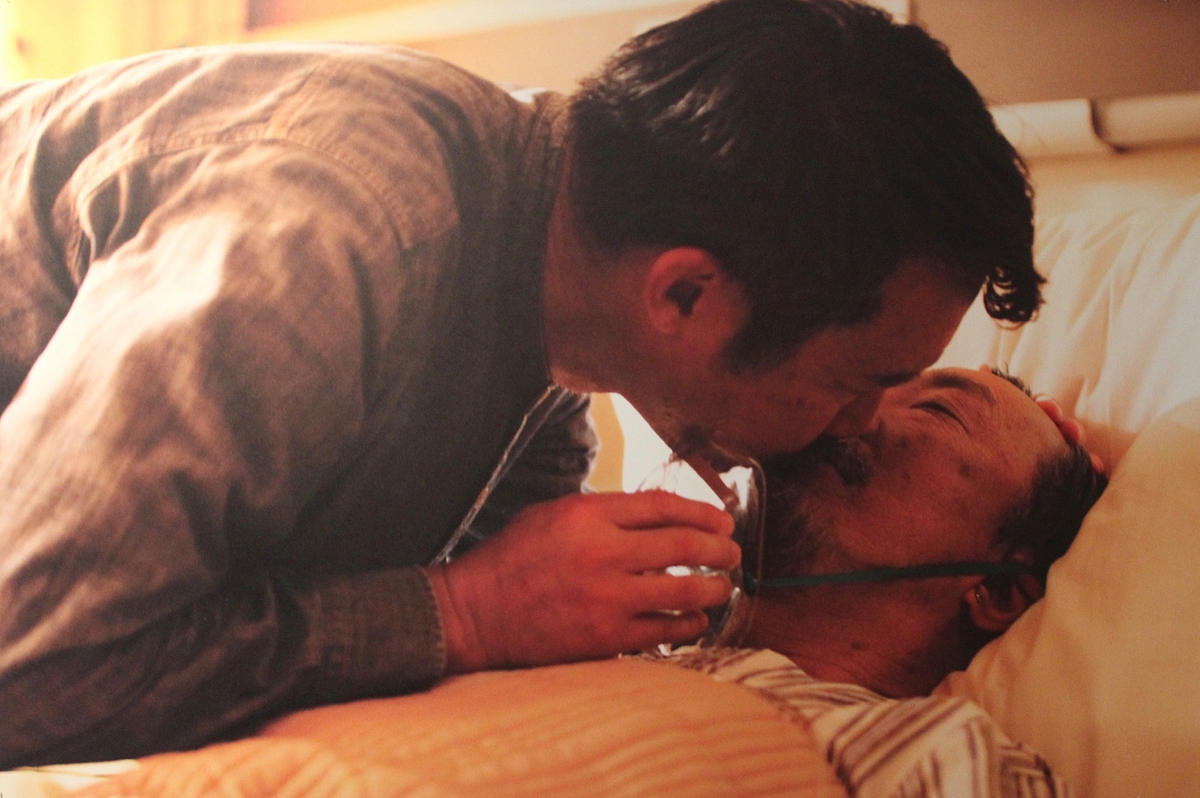
Still from "Forever 17."
One artist heads straight into the complexity of being queer in Hong Kong. Another heads out into the desert. And another heads into the dismal future. What all three artists — Kit Hung, January Yoon Cho, and Gary Sczerbaniewicz — have in common is a willingness to explore things that make them uncomfortable. And all three have solo shows at the Ely Center of Contemporary Art, running now through Feb. 19 concurrently with a few other shows after ECOCA took a brief holiday hiatus.
Kit Hung’s “Forever 17” — presented with Yale-China Association, which is putting on its annual Lunarfest on Jan. 28, in person for the first time since 2020 — is a half-hour video, stills from that video, and other ephemera that tell “the tale of two queer men growing old together. After decades of effort by LGBTQ activists around the world, many aspects of queer life and queer culture have entered the public consciousness since the 1990s. In spite of this, queer visibility in the world is still highly concentrated on the young, white, and middle-class sector. Those who came out during the 1990s together with the LGBTQ movement are now entering their 40s and beyond, and are still trying to imagine a queer future for their upcoming life.”
The spark for the film came from two graduation photos of Kit Hung, taken with his parents and the parents of his then-boyfriend, now-husband, as well as a letter his mother sent him when she discovered he was queer, in which she expressed her love and support for her son right alongside her confusion, disapproval, and sadness regarding his sexuality. The film focuses on two young same-sex couples struggling with their changing roles in society as they explore a “possible, imaginable queer future.”
The bravery in “Forever 17” lies in presenting its protagonists as complex people. The queer couples at the center of the video are dealing with a great deal of stress from the outside world, confronting obstacles to legal, social, and familial acceptance. But they’re not perfect people, either. They have flaws; they doubt, they err, they stray. Kit Hung’s willingness to show its subjects in full make “Forever 17” hit harder, because the people in it aren’t just symbols of oppression. They are people, maybe starting to crack under pressure. Wouldn’t we all?

January Yoon Cho
We Have Traveled Afar.
January Yoon Cho’s art “explores our connection to the environment,” an accompanying note explains. “This series features the artist’s walking performances in diverse desert landscapes. Superimposed with digital drawings of biological forms such as a cells, embryos, and skeletons,” the images address “the beauty, destruction, and preservation of the land we live in.”
Yoon Cho is able to incorporate all these elements together through an incongruous pairing of form and content. Her photographs of the desert are bright and bold. The images she superimposes over them are simple shapes made with bold lines. They’re almost cartoons. This makes their unsettling subject matter almost hard to pick up at first glance. That’s how the viewer is lured in. The work seems friendly, until you perceive that the drawing is of, say, a baby cut loose from its placenta, or a pile of human and animal bones floating in midair. It’s one part happy-go-lucky adventure, one part existential dread.

Gary Sczerbaniewicz
Archaeopteryx.
A similar sense of queasy playfulness suffuses Gary Sczerbaniewicz’s pieces. “My practice involes an insatiable fascination with architectural spaces that evoke a sense of psychological unease,” Sczerbaniewicz writes in an accompanying statement. “I seek to disorient the viewer in an attempt to break the staid, often detached, passive and familiar approach to consuming artworks. I believe that it is this hermetic space where authentic communication between artist and viewer occurs.… I am drawn to create works in which an unknown, sudden, violent event has rendered a space inert, transforming it from its original intended function into a hybrid and liminal zone. A recovering child of both Catholicism and the Cold War, my works possess an acute fondness for the postapocalyptic, the weird, the eerie, the occult, alternative histories and the ‘world’ of conspiracy theory.”
So in Archaeopteryx, a sculpture of a wall that once held a staircase and now holds only its shadow, the viewer is invited to wonder: what happened to remove the staircase? And was anyone on the staircase when it happened? What does the rest of the building look like now? The simple geometry of it makes it seem like a dollhouse, but it offers anything but comfort. Another piece, Resting Bitchface No. 1, features a brick wall that’s held up by anchors, as seen on many buildings around town when a building that used to have another building right next to it, helping support it, no longer does. What separates Sczerbaniewicz’s piece from these real-life examples is the large, deforming bulge pushing out from the sculpture, underneath and around the anchors, as if something is actively trying to force its way through. Sczerbaniewicz is asking us to do with our built environment what Yoon Cho and Kit Hung are asking us to do with their respective subjects: look hard, notice the details, and ponder them, perhaps especially if it makes us uncomfortable.